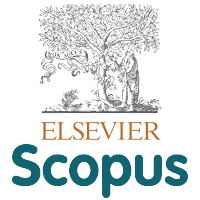STUDY OF WOOD SAWDUST WITH ADDITION OF PLANTATION WASTES AS A GROWTH MEDIUM ON YIELDS AND QUALITY OF WHITE OYSTER MUSHROOM
Abstract
The study aimed to investigate the use of wood sawdust as a medium for growth and the optimum addition ratio of plantation wastes that can increase the yields and quality of white oyster mushroom (Pleurotus ostreatus). This research used Completely Randomized Design (CRD) consisting of 7 levels of treatment ratio of wood sawdust and plantation wastes. The data analysis involved one way ANOVA followed by Duncan’s 5%. The results showed that the wood sawdust can be used as growing medium, and the addition of plantation wastes can increase the yields and the quality of white oyster mushroom. The addition of cocoa and coffee wastes with a ratio 25% was the optimum ratio treatment which increased the number of fruiting bodies, caps diameter, production weight, Biologycal Eficiency Ratio (BER) and protein, fats, carbohydrates and fiber content in white oyster mushrooms. It is recommended to be applied because both treatments would increase the yield and quality of white oyster mushroom.
Keywords
Full Text:
PDFReferences
Asyiah, I.N., I. Mudakir and Rahayu. 2011. Effects of addition of bagasse, coffee pods and tofu dregs wastes as growing medium mixture on growth and production of white oyster mushroom (Pleurotus ostreatus). Bioedukasi Journal of Biological and Life Sciences Learning. Biology Education Study Program, Faculty of Teacher Training and Edu-cation, Jember University 9 (2): 191-211.
Baon, J.B., R. Sukasih and R. Nurkholis. 2005. Rate of decomposition and quality of solid coffee waste composts: Effects of composting activators and raw material (in Indonesian). Pelita Perkebunan 21 (1): 31-42.
Cangy, C. and A. Peerally. 1995. Studies of Pleurotus production on sugar-cane bagasse. African Journal of Mycology and Biotechnology 3 (2): 67-79.
Chang, S.T. 2007. Mushroom cultivation using the “ZERI” principle: Potential for application in Brazil. Micologia Interna-tional Aplicada 19 (2): 33-34.
Directorate General of Plantation. 2006. Statistics plantation Indonesia 2003-2005. Department of Agriculture, Jakarta.
Djarijah, N.M. and A.S. Djarijah. 2001. Oyster mushroom cultivation (in Indonesian). Kanisius. Yogyakarta. pp. 68.
Dumanauw, J.F. 1990. Know Wood (in Indonesian). Kanisius. Yogyakarta. pp. 107.
Goenadi, D.H., J.B. Baon, Herman and A. Purwoto. 2005. Agribusiness prospect and development of cacao in Indonesia (in Indonesian). Agricultural Research and Development Board. Department of Agriculture. pp. 27.
Government of Jember. 2010. Jember in numbers 2010. Jember. Government of Jember.
Muchroji and Y.A. Cahyana. 2003. Oyster mushroom cultivation (in Indonesian). Penebar Swadaya. Jakarta.
Mudakir, I. 2010. Use of sawn wood powder and addition of NPK fertilizer on production of brown oyster mushroom (Pleuratus cystidiosus). Sainstek (Science and Technology) Journal, Research Institutions of Jember University 9: 21-27.
Santoso, H.B. 1992. Cultivation of falcata (in Indonesian). Kanisius. Yogyakarta.
Shepherd, T. and T.N. Yap. 1986. Utilization of by-products of cocoa bean processing. Proceedings of the International Conference on Cocoa and Coconuts: Progress and Outlook. The Incorporated Society of Planters: Kuala Lumpur, Malaysia, 15-17 October 1984. p. 641-651.
Sudarmadji, S., B. Haryono and Suhardi. 1996. Analysis of food and agriculture (in Indonesian). Liberty. Yogyakarta.
Suriawiria, H.U. 2002. Oyster mushroom cultivation (in Indonesian). Kanisius, Yogyakarta. pp. 87
Tejasari, S. 2005. Nutritional value of food (in Indonesia). Graha Ilmu. Yogyakarta.
Yuniasmara, C., Muchroji and M. Bakrun. 1999. Oyster mushrooms (in Indonesian). Penebar Swadaya. Jakarta.
DOI: http://doi.org/10.17503/agrivita.v37i1.425
Copyright (c) 2015 AGRIVITA Journal of Agricultural Science
License URL: http://creativecommons.org/licenses/by-nc/4.0/








